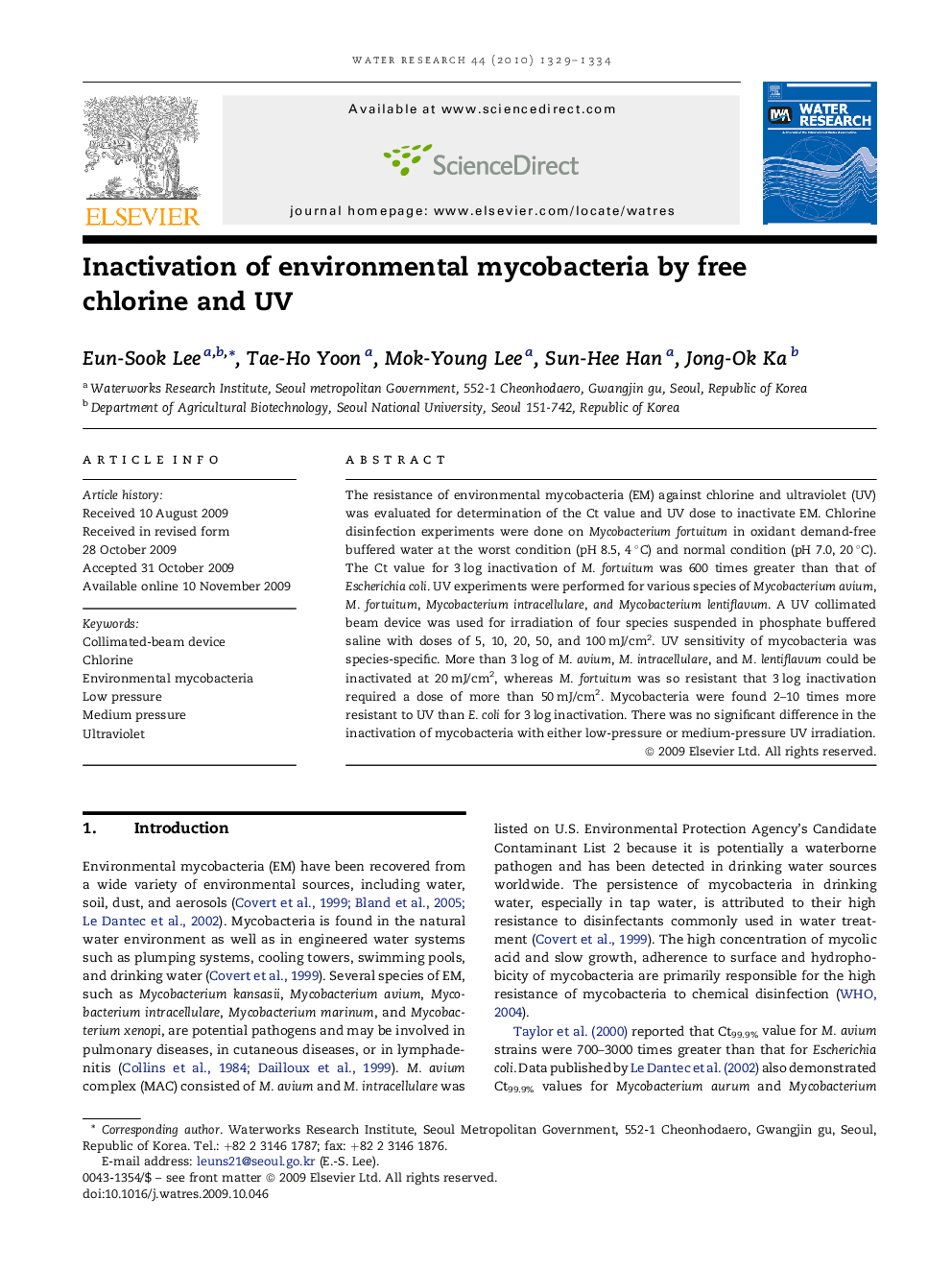| کد مقاله | کد نشریه | سال انتشار | مقاله انگلیسی | نسخه تمام متن |
|---|---|---|---|---|
| 4484269 | 1316915 | 2010 | 6 صفحه PDF | دانلود رایگان |

The resistance of environmental mycobacteria (EM) against chlorine and ultraviolet (UV) was evaluated for determination of the Ct value and UV dose to inactivate EM. Chlorine disinfection experiments were done on Mycobacterium fortuitum in oxidant demand-free buffered water at the worst condition (pH 8.5, 4 °C) and normal condition (pH 7.0, 20 °C). The Ct value for 3 log inactivation of M. fortuitum was 600 times greater than that of Escherichia coli. UV experiments were performed for various species of Mycobacterium avium, M. fortuitum, Mycobacterium intracellulare, and Mycobacterium lentiflavum. A UV collimated beam device was used for irradiation of four species suspended in phosphate buffered saline with doses of 5, 10, 20, 50, and 100 mJ/cm2. UV sensitivity of mycobacteria was species-specific. More than 3 log of M. avium, M. intracellulare, and M. lentiflavum could be inactivated at 20 mJ/cm2, whereas M. fortuitum was so resistant that 3 log inactivation required a dose of more than 50 mJ/cm2. Mycobacteria were found 2–10 times more resistant to UV than E. coli for 3 log inactivation. There was no significant difference in the inactivation of mycobacteria with either low-pressure or medium-pressure UV irradiation.
Journal: Water Research - Volume 44, Issue 5, March 2010, Pages 1329–1334